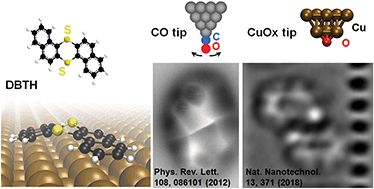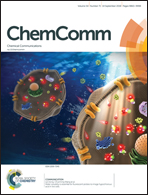Copper-oxide tip functionalization for submolecular atomic force microscopy
Abstract
Establishing submolecular imaging in real-space by non-contact atomic force microscopy (NC-AFM) has been a major breakthrough in the field of organic surface chemistry. The key for the drastically increased resolution in these experiments is to functionalize a metallic tip apex with an inert probe particle. However, due to their weak bonding at the metal apex, these probe particles show a pronounced dynamic lateral deflection in the measurements. This constitutes a major limitation of this approach as it involves image distortions, an overestimation of bond lengths, and even artificial bond-like contrast features where actually no bonds exist. In this contribution, recent progress by using an alternative approach by copper-oxide tip functionalization is reviewed. Copper-oxide tips (CuOx tips) consist of a bulk copper apex, terminated by a covalently connected single oxygen atom, which chemically passivates the tip. Such CuOx tips can be identified by contrast analysis at specific surface sites and allow for submolecular resolution. A comparative analysis of data recorded with flexible tips allows a detailed discussion of the contrast mechanisms and related artificial effects. It is concluded with an assessment of limitations, future challenges and opportunities in such experiments.

- This article is part of the themed collection: Scanning probe frontiers in molecular 2D-architecture world


 Please wait while we load your content...
Please wait while we load your content...